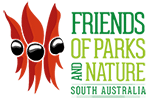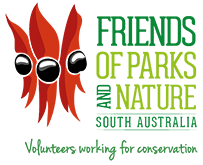Friends of Osprey in South Australia
Background
The Endangered Osprey population in South Australia is considered to be disjunct from the species main distribution in Australia and appears precariously balanced ecologically at the extreme south eastern edge of its breeding range.
Comprehensive surveys across South Australia in 2008-10 recorded 58 pairs of Osprey state-wide; compared with results from a series of repeat surveys in 2015-17 when only 43 pairs were found; revealing a significant 26% decline in the breeding population to have occurred over the intervening period.
Few raptors, including Ospreys, will tolerate human encroachment and disturbance directly above their nest, as typically occur in South Australia’s open coastal landscapes. The lack of suitable secure nesting sites maybe an important limiting factor to Osprey breeding populations in SA.
Artificial nest platforms are a vital and proven form of threat mitigation in areas where limited natural nest sites exist and where food is plentiful, additional nest sites can substantially boost nesting densities. Conservation initiatives in Europe and North America have shown unequivocally that artificial nest structures can result in greater productivity and therefore are an important population augmentation strategy.
Heavy rain and strong winds are known to cause heavy mortality amongst Osprey broods, while at the same time reducing the foraging success during breeding. Osprey eggs and young are also vulnerable to predation from foxes, Corvids, Pacific Gulls and Silver Gulls, Brush-tailed Possums and Goana. Corvids and Gulls are known to predate on eggs when adults are disturbed and distracted by human presence.
Much is still unknown about the South Australian Osprey population. Further research such as; satellite tracking to determine dispersal and movements post fledging, habitat utilisation and foraging behaviours and strategies of adult male Ospreys, dietary studies and re-assessment of the status of the Osprey population in each region to measure stability and productivity and identify trends in the available baseline data to determine mitigation strategies against any further population declines.
Objectives:
1. To establish a Friends of Osprey Group to promote and encourage community involvement in conservation, research and protection activities.
2. To re-establish and augment the Osprey population across the Yorke Peninsula, Eyre Peninsula and Kangaroo Island Regions through the provision of artificial nest platforms.
Conservation Status
In South Australia, the Osprey was formally up-listed to Endangered status in 2008 (National Parks and Wildlife Act 1972).
Community Involvement and Education
Experience world-wide has shown that community support and involvement is integral to the success of conservation projects, resulting in heightened levels of voluntary involvement in wildlife conservation projects including ongoing monitoring activities. Community support and involvement can vary from assisting in construction of artificial nest platforms through to assisting in monitoring via web cams, population surveys and education activities(i.e. citizen science related projects).
To date local communities have been involved to varying degrees in Osprey monitoring and artificial nesting platform activities in parts of SA and meaningful involvement will be integral to the future success of Osprey recovery projects on Yorke Peninsula, Eyre Peninsula and Kangaroo Island Regions.
Opportunities exist to seek support for the development of an “Osprey Fund” which would help to implement strategic conservation and recovery projects and facilitate the involvement of local schools in practical on ground activities.
Benefits to Other Flora & Fauna Species
Osprey occur in areas of high biodiversity, have large territories and are good indicators of the health of the environment (Pool 1989). Areas Osprey are known to frequent possess intact coastal habitat, healthy marine habitats with good fish stocks, and areas where diverse bird populations occur. Hence, the conservation of any area for Osprey will have a substantial biodiversity benefit for a wide range of coastal and marine animals and plants.
How can you get involved?
Contact the coordinator for further information and how to join the group.
Ian Falkenberg
Interim Friends of Osprey Group Coordinator

